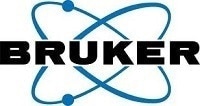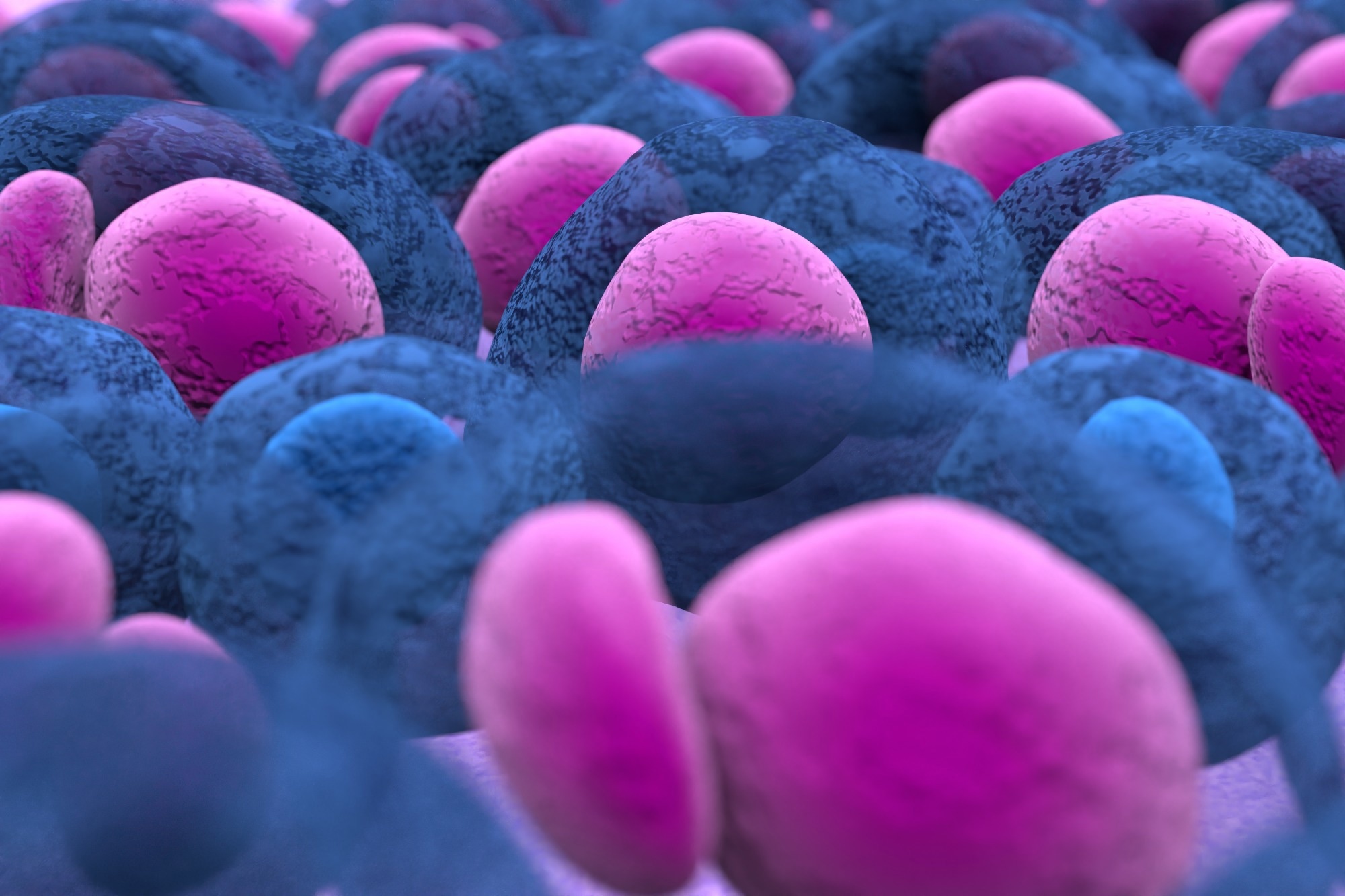News Medical talks to Samuel Penwell and Winfried Wiegraebe at Bruker about how the Vutara VXL enables robust, high-throughput 3D super-resolution via single-molecule localization, pairing bi-plane detection and top-hat illumination with a silicon-immersion objective and the PlexFlo platform for streamlined DNA-PAINT multiplexing.
What makes the Bruker Vutara VXL a versatile platform for biological imaging?
The Bruker Vutara VXL is essentially a localization platform—an imaging platform able to perform single-molecule localization of DNA, RNA, and proteins in a range of molecular biology settings.
For example, we can use the Vutara VXL to image RNA, perform single-molecule RNA screening, or image protein.
Single-molecule localization microscopy is a popular, super-resolution technique that provides a significant amount of detail, so much so that it is actually possible to count die molecules and observe their subcellular structure, from mitochondria to viruses.
Watch the full webinar
How does single-molecule localization microscopy (SMLM) achieve super-resolution?
SMLM addresses many of the resolution constraints found in traditional imaging techniques by pinpointing individual fluorescent molecules. Rather than being bound by diffraction limits, SMLM achieves resolutions down to 10 nm, depending on the number of photons detected.
To put this in perspective, consider a high-end confocal microscope like an advanced, diffraction-limited electron microscope. It can image structures like microtubules, which are roughly 25 nm in diameter. However, due to the diffraction limit, that 25 nm structure appears blurred, often measuring between 200 and 250 nm in the final image—essentially a tenfold loss in detail.
The drive to achieve even finer resolution has spurred the development of super-resolution microscopy techniques.
One widely used approach is structured illumination microscopy (SIM), which projects specific light patterns onto the sample to enhance lower spatial frequencies. This typically doubles the resolution to about 100 nm, and further improvements are possible through computational techniques like deconvolution.
Point-scanning methods, such as STED (Stimulated Emission Depletion) and GSD (Ground State Depletion), operate by scanning the sample with an excitation laser while overlaying a depletion laser. This suppresses fluorescence outside a narrowly defined region, effectively shrinking the area that emits detectable light. These techniques commonly achieve resolutions in the range of 30 to 70 nm, as reported in the literature.
Finally, methods like PALM, STORM/dSTORM, (F)PALM, and Deep-STORM fall under the umbrella of SMLM. Unlike diffraction-limited methods that are constrained by the wavelength of light, these rely on the number of photons collected from each molecule to determine resolution.
Image Credit: Nemes Laszlo/Shutterstock.com
What design features improve the stability and compactness of the Vutara VXL?
The Vutara VXL is a benchtop optical microscope that’s been optimized specifically for single-molecule localization. It uses Bruker’s bi-plane detection method, which enables 3D localization even when you’re working with just a single-objective Z position.
One of the key features is its larger field of view, which is really helpful for omics applications. It also includes five powerful laser lines for illumination, a flat illumination profile, and an integrated multiplexing platform. The software is designed around the workflow, so it’s easy to navigate and user-friendly.
Even with all that functionality, the system has a very small footprint. It includes several key components like a laser module, an e-box for electronics control, chillers for thermal management, a fluidics module for multiplexing, and a workstation.
The compact design is made possible by using two vertical optical plates inside the instrument to house the optical path. That setup keeps everything tightly integrated and indexed to a single metal plate, which helps improve overall system stability.
Compared to our previous generation, we’ve shortened the beam path quite a bit. We’ve also added active temperature control and an autofocus module to help reduce Z-drift. The result is pretty solid stability—Z-drift typically stays around 200 nanometers, even across multiple days of acquisition.
The optical path itself starts with a laser module that offers five different laser lines, which are fiber-coupled directly to the microscope. The excitation light passes through a dichroic lens to reach a high numerical aperture objective. We also use an autofocus dichroic that allows the autofocus module to keep the system in focus throughout the experiment.
How does the biplane detection system enable 3D localization?
The Vutara VXL uses a square aperture in the primary image plane, which is relayed to the camera through the bi-plane module. This splits the image and creates two side-by-side views of the sample on a single sensor, each with slightly offset focal conditions. This offset is what enables three-dimensional localization.
Our proprietary biplane detection system captures two distinct planes on the sensor at the same time—one just above and one just below the nominal focus of the objective. Because each Z-offset of an emitter produces a unique pair of images across these two planes, ranging from perfectly in focus on one plane to perfectly in focus on the other, we’re able to determine the emitter’s Z-position from a single objective position.
This approach eliminates the need for Z-scanning and, when combined with an experimental point spread function calibration, becomes a powerful and robust method for 3D localization.
In bypass imaging mode, two mirrors slide into place to route around the biplane module, providing a larger field of view. An emitter perfectly in focus with the objective will appear equally defocused on both planes in this mode.
Why is top-hat illumination critical for consistent imaging resolution?
Top-hat illumination is critical for consistent imaging resolution because it ensures uniform photon distribution across the entire field of view, and that directly impacts measurement precision. To achieve this, we use five powerful laser lines to provide bright, even illumination and support fast imaging speeds.
Our system delivers a uniform top-hat illumination profile, which is essential for maintaining consistent resolution. Since localization precision depends on the number of photons collected, having uniform illumination across the field ensures that resolution doesn’t drop off toward the edges.
We generate this top-hat profile by coupling laser light from the laser module into the instrument using an optical fiber. The setup uses a square fiber tip and a multi-mode laser, which scrambles the light within the fiber and produces very even illumination at the output.
This contrasts with traditional Gaussian illumination, which is most intense at the center and fades toward the edges. This results in high precision in the middle of the field but reduced resolution as you move outward.
The field of view is 200 by 200 microns for multiplexed localization microscopy and widefield imaging, and 50 by 50 microns for the biplane imaging mode and single long-field localization.
What makes silicon immersion objectives ideal for deep imaging?
Silicon immersion objectives are ideal for deep imaging because they maintain consistent imaging quality throughout the depth of the sample. That consistency is essential, and selecting the right objective is a big part of it—so the Vutara VXL comes equipped with the Olympus 60X silicon immersion objective by default.
While a typical oil immersion objective offers a higher numerical aperture and can perform well right at the coverslip, it’s not designed with the sample’s refractive index in mind. As a result, the point spread function (PSF) degrades quickly as you image the sample deeper.
Water immersion objectives are often used as an alternative, since they provide a more uniform PSF at moderate depths. But they have trade-offs: the lower numerical aperture can affect image brightness and resolution, and there’s often a residual index mismatch between the water and the cellular or tissue environment.
Silicon immersion objectives offer the best of both worlds. They’re designed to work with immersion media that’s much more closely matched to the refractive index of biological samples. That gives you a much more consistent PSF as you move deeper into the sample, along with a higher numerical aperture that results in brighter images overall.
The last piece of the puzzle is camera selection. The Vutara VXL uses the Orca Fusion BT sCMOS camera from Hamamatsu, which is highly sensitive with a quantum efficiency of 95%. It also features very low noise and a large sensor area, allowing both biplane images to be captured simultaneously on the same sensor.
The effective pixel size is around 100 nanometers per pixel—small enough to achieve proper Nyquist sampling of the PSF in the focal plane, but not so small that it spreads the photons across too many pixels.
What advantages does bi-plane imaging have over point spread function engineering for 3D localization?
Bi-plane imaging offers more robust Z resolution and fewer aberrations, especially in thick or complex biological samples.
The key characteristic of the structures we image is that they are three-dimensional. Our software performs fitting on the fly, allowing us to build up this structure as we acquire images. This provides a three-dimensional dataset with the Z position of the different localizations color-coded. We can measure approximately 1 micron slices in one shot, but more slices would require the use of a Z-stack.
While point spread functions are useful, it is not always advisable to rely on the shape of the point spread function because samples such as cells and tissue can introduce aberrations. The bi-plane approach relies on differences in intensities, meaning that it is much more robust.
The bi-plane can also cover a much larger area. This is important, but cells are thicker than 100 nanometers in size, and it may be necessary to use techniques such as brightfield illumination to closely investigate tissue sections, organets, cell colonies, or other structures.
We normally specify an imaging depth of about 50 microns, but we have users who go up to 100 micrometers with some clearing protocols.
The bi-plane approach has an imaging range of about 50 microns, and the instrument can also accommodate large field-of-view detection.
The bi-plane method is ideal for single-molecule localization applications such as PALM, a popular live cell imaging technique that uses a fluorescent protein and an activation laser to label at the endogenous level within the cell. STORM uses a similar approach using organic dyes, while dSTORM leverages a stochastic process, removing the need to manually switch different dyes on and off because these blink on their own.
How fast the dyes blink depends on laser power. It is important to have a very high laser power and to ensure the same intensity over the whole field of view, so that blinking characteristics are the same across the field of view.
How does Vutara VXL support multiplexed imaging workflows like DNA-PAINT?
The Vutara VXL is well suited for multiplexed imaging workflows like DNA-PAINT, which relies on the transient binding of dye-labeled DNA strands to generate single-molecule signals.
In DNA-PAINT, a dye molecule is briefly bound to the target, making it visible for imaging before it returns to solution and blurs out. This process is driven by the interaction between complementary DNA strands.
Instead of using traditional dye-labeled antibodies—which are limited by the number of probes and dyes available—DNA-PAINT replaces the dye with a single-stranded DNA “docking strand” attached to the antibody.
A complementary “imaging strand,” which carries the dye, binds to the docking strand temporarily. This transient binding allows the imaging strand to be imaged, then washed away and replaced with another imaging strand—possibly with the same dye but a different DNA sequence. The number of unique structures you can label is essentially limited only by the number of available DNA codes.
This method doesn’t always require high laser power or the extreme resolution of the bi-plane approach. A standard Z-stack with a resolution suitable for 200 x 200 micron fields of view is often sufficient. It does, however, rely on a localization algorithm, like those used in smFISH or chromatin tracing, to interpret the data.
Since DNA-PAINT is inherently multiplexed, the Vutara VXL supports it with integrated fluidics and software through our PlexFlo platform. PlexFlo includes 15 fluidic reservoirs, allowing up to 15 different probes to be loaded at once. These probes can even be swapped during a run, so you’re not limited to just 15, making high-throughput experiments possible.
The software side of PlexFlo lets users design complex workflows easily. It includes intuitive tools to synchronize fluidics flow with autofocus and ensures all metadata is tied to each captured image, making it simple to track which probes were used and when.
We have also developed a second-generation PlexFlo unit that supports 96-well plates, which is ideal for large-scale multiplexing experiments.
Temperature control is built into the PlexFlo unit as well, with sample storage adjustable between 4°C and 37°C.
Another major benefit of DNA-PAINT is that it limits photobleaching by using high-quality organic dyes. It typically delivers higher resolution than traditional STORM imaging, which makes it especially powerful for detailed, multiplexed analysis.
Watch the full webinar
About the Speakers

Winfried Wiegraebe is the product manager for super-resolution microscopy at Bruker. He has close to 30 years of experience in advanced microscopy in biology – including AFM, FCS, confocal microscopy, and super-resolution microscopy. Before joining Bruker, Winfried managed the Stowers Institute for Medical Research microscopy infrastructure in Kansas City, MO, US, and built the imaging pipeline at the Allen Institute for Cell Science in Seattle, WA, US. He studied Physics at the Technical University in Munich, Germany, and did his Ph.D. studies at the Max-Planck Institute in Martinsried, Germany

Samuel Penwell is a Technology Development Systems Engineer at Bruker Fluorescence Microscopy and a physical chemist specializing in infrared/visible spectroscopy and advanced fluorescence microscopy. With over six years at Bruker, spanning customer support to systems development in Madison, WI, he builds and refines state-of-the-art microscopes and partners with scientists to translate research needs into reliable, high-performance instruments
About Bruker Nano Surfaces and Metrology
Bruker Nano Surfaces and Metrology provides high-performance, specialized analysis and testing technology for the widest range of research and production applications.
Our broad portfolio of 2D and 3D surface profiler solutions supply the specific information needed to answer R&D, QA/QC, and surface measurement questions with speed, accuracy, and ease. And our tribometers and mechanical testers deliver practical data used to help improve development of materials and tribological systems. Bruker’s industry-leading quantitative nanomechanical and nanotribological test instruments are specifically designed to enable new frontiers in nanoscale materials characterization, materials development, and process monitoring.
Bruker has been leading the expansion of atomic force microscope (AFM) capabilities since the very beginning, and our systems are the most cited AFMs in the world. Our comprehensive suite of AFMs enables scientists around the world to make discoveries and advance their understanding of materials and biological systems.
With our nanoIR technology, Bruker is now also the recognized leader in photothermal IR spectroscopy from the nanoscale to the sub-micron and macro scales. And, as the only AFM manufacturer with a state-of-the-art probes nanofabrication facility and worldwide, application-specific customer support, Bruker is uniquely positioned to provide the equipment, guidance, and support for all your nanoscale research needs.
Bruker’s suite of fluorescence microscopy systems provides a full range of solutions for life science researchers. Our multiphoton imaging systems provide the imaging depth, speed and resolution required for intravital imaging applications, and our confocal systems enable cell biologists to study function and structure using live-cell imaging at speeds and durations previously not possible.
Bruker’s super-resolution microscopes are setting new standards with quantitative single molecule localization that allows for the direct investigation of the molecular positions and distribution of proteins within the cellular environment. And our Luxendo light-sheet microscopes, are revolutionizing long-term studies in developmental biology and investigation of dynamic processes in cell culture and small animal models.
In addition to developing and manufacturing next-generation systems to help our customers’ current and future applications, Bruker is also very active in acquiring and partnering with innovative companies to continue to expand our range of enabling technologies and solutions. Recent additions to the Bruker Nano Surfaces family include Alicona Imaging, Anasys Instruments, Hysitron, JPK Instruments, Luxendo, Inscopix, and Neurescence.
Whatever your measurement and analysis needs, whatever your material or scale of investigation, Bruker has a specialized high-performance solution for you.
